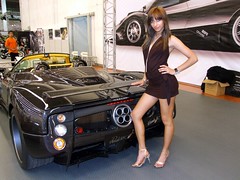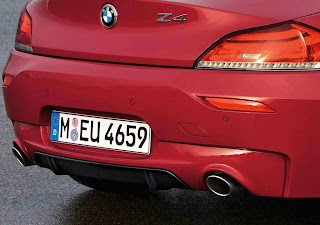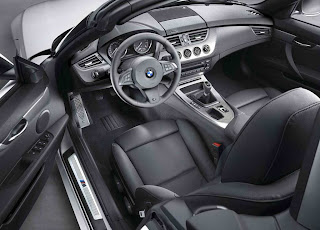 Unlike the A2 model which was originally designed as a three door hatchback vehicle which later all and became more of a luxury family car, the Audi A4 which is also manufactured by the same German automotive maker "Audi" is a luxury executive car which can also be classified as a compact vehicle. According to the enumeration you might think that this is the successor to the A2 but, it actually is a successor of the Audi 80.
Unlike the A2 model which was originally designed as a three door hatchback vehicle which later all and became more of a luxury family car, the Audi A4 which is also manufactured by the same German automotive maker "Audi" is a luxury executive car which can also be classified as a compact vehicle. According to the enumeration you might think that this is the successor to the A2 but, it actually is a successor of the Audi 80.This version became available as an "Advant" which is the name that Audi gave to station wagons and also to estate cars. The A4 was also available as a Cabriolet and sedan. The  production of this vehicle started in 1994 and ever since its introduction to the market there have been for generations (or versions) of this model.
production of this vehicle started in 1994 and ever since its introduction to the market there have been for generations (or versions) of this model. The B5 platform-based Audi A4 was sold between 1996 and 2001. The top Audi A4 engine in Europe was a 2.8l V6, one of nine engines shoppers could choose from in Europe. In North America the only Audi A4 engine available at launch was the 2.8l V6, which was also the sole engine available in its predecessor, the 80 model.
This Audi A4 engine is a 90 degree V6 with a cast iron block and alloy cylinder heads. In its original form it has twelve valves opened by single overhead cam (SOHC) heads. It produces 174 horsepower and 184lb ft. torque.
 Note that while Audi often shares parts with its parent company Volkswagen, this Audi A4 engine is not related to VW's VR6, even though this engine was offered in similar sizes and power outputs. In more recent years both the 90 degree motor and the VR6 have been place in the Audi A4's engine bay. While Audi A4 engine is smoother and more powerful, it is heavier than the single head VW unit.
Note that while Audi often shares parts with its parent company Volkswagen, this Audi A4 engine is not related to VW's VR6, even though this engine was offered in similar sizes and power outputs. In more recent years both the 90 degree motor and the VR6 have been place in the Audi A4's engine bay. While Audi A4 engine is smoother and more powerful, it is heavier than the single head VW unit.The Audi A4 engine uses a variable length intake manifold. This manifold has two intake tracks. At slow speeds, air is directed through a long intake track for better torque, while at high speeds air comes through a very short track for improved breathing, providing top end power. This gives similar performance to early two-stage variable intake valve systems without the complexity.
While the Audi 80 used the AAC version of the 2.8l, the Audi A4 engine got the revised AFC version. These changes mainly affect the head design, using a lighter camshaft with revised valve timing, a simpler, lighter valve spring assembly, and smaller diameter intake and exhaust valves. The oiling system was also upgraded, with a larger oil cooler, larger filter, and more effective oiling system. While it may be possible to put an AAC motor in an A4, the original Audi A4 engine is more reliable thanks to these upgrades.

A new head with five valve per cylinder was developed by Audi Sport for use in touring car racing and eventually made its way onto several of Audi's engines, starting with the new 1.8l turbo, and eventually the 2.8l. This Audi A4 engine choice included this new 30 valve layout in Europe starting in 1996, and would replace the 12 valve engine in the American market when the car was refreshed in 1998. Power went up to 190 hp 203 lb. ft. of torque. The head also has dual overhead cams, but everything outside of the heads is similar to the twelve valve engine.
The Audi A4 engine gained twin turbochargers in the S4, the A4's sports model. Different pistons were used changing displacement slightly: Officially it is a 2.7l engine, although it was sometimes quoted as being a 2.8l. This engine produces 261 horsepower and 295 ft. lbs. of torque. The 2000 and 2001 A4-based RS4 used a version of this engine modified by Cosworth Technology to produce 375 horsepower and 325 ft. lbs. of torque. This car was never sold in America, and the engine doesn't make a good Audi A4 engine swap candidate due to the width of the engine. The RS4 uses wider front body panels to accommodate the extra piping and larger turbo added by Cosworth.
Audi A4 engine choices expanded with the introduction of the B5 platform in 2001, but the 2.8l was replaced by a new 3.0l after being used for over a decade in Audi's lineup.
 Specifications :
Specifications :





























